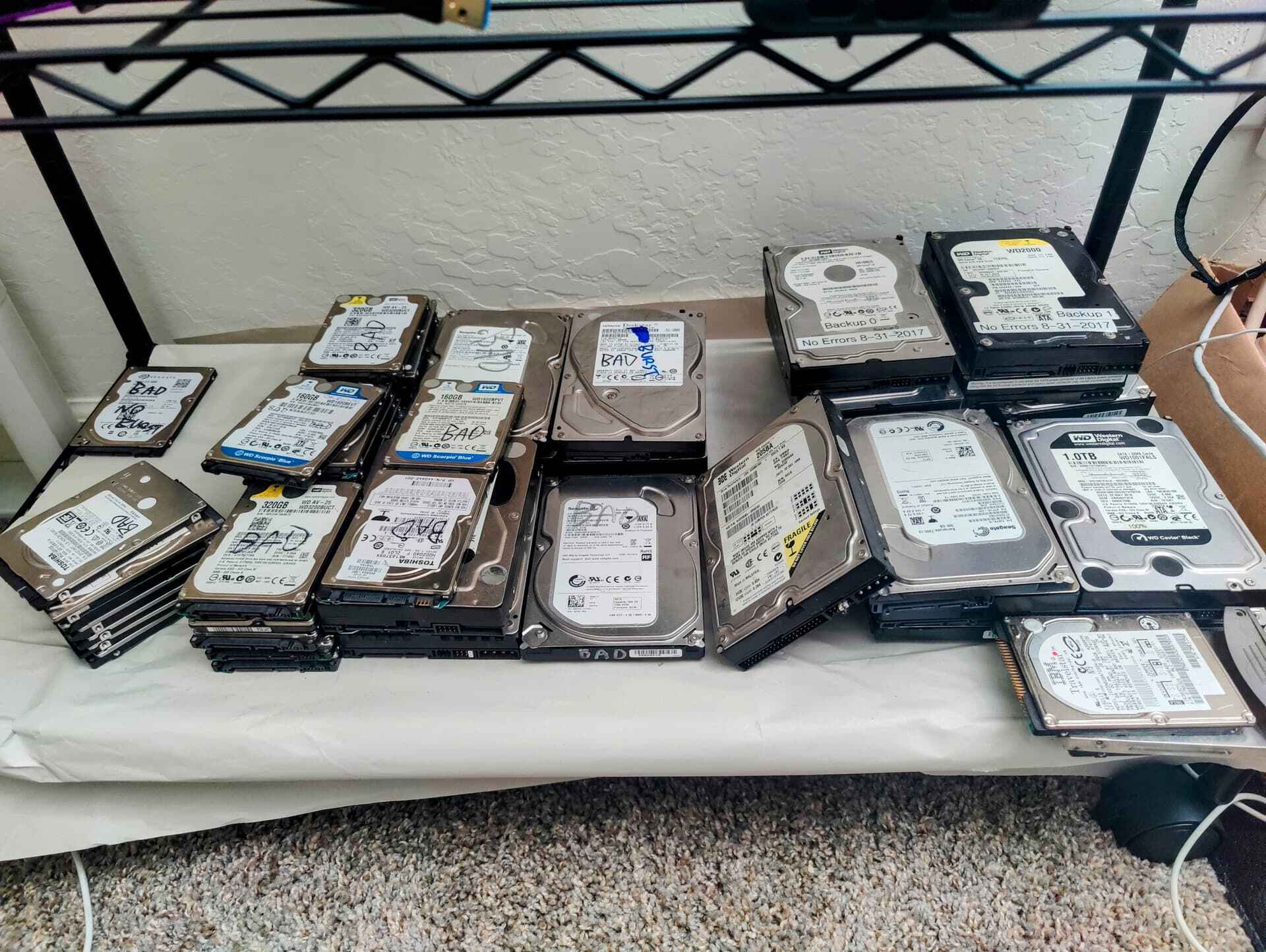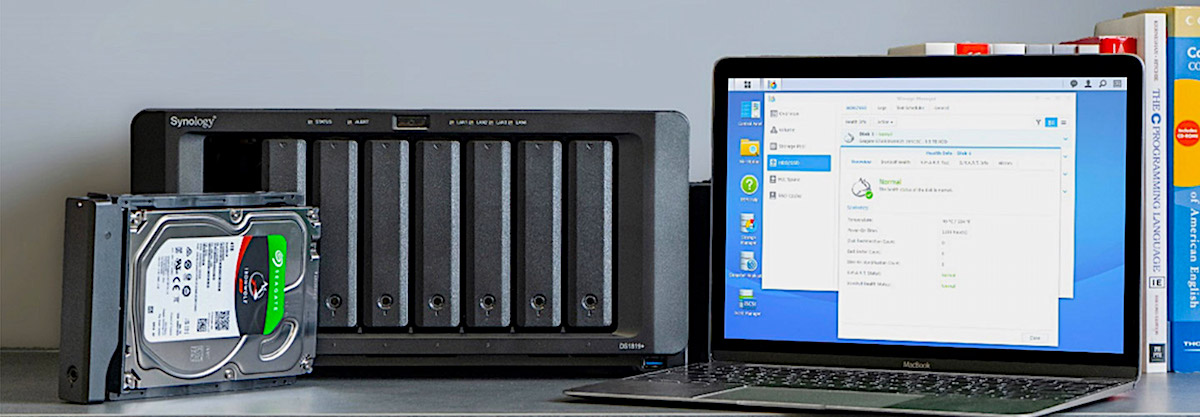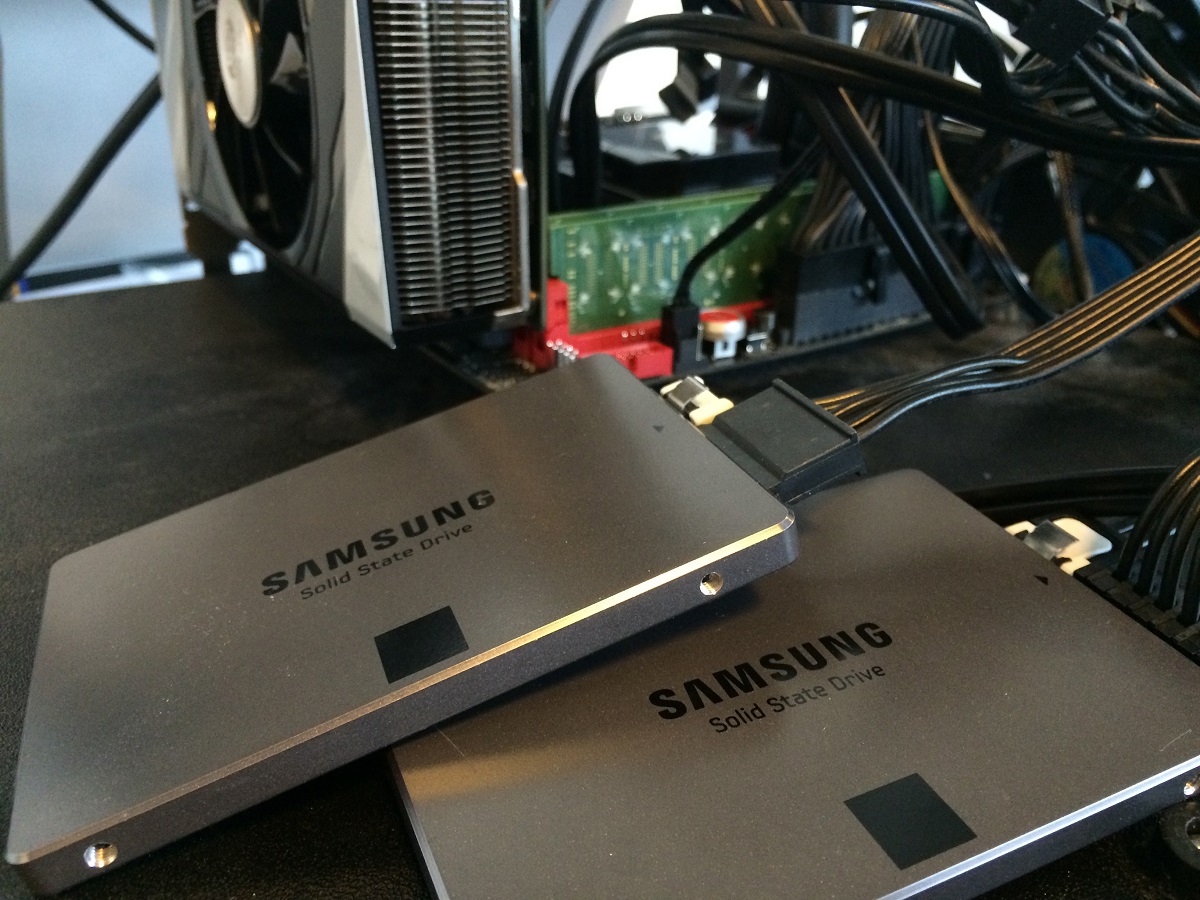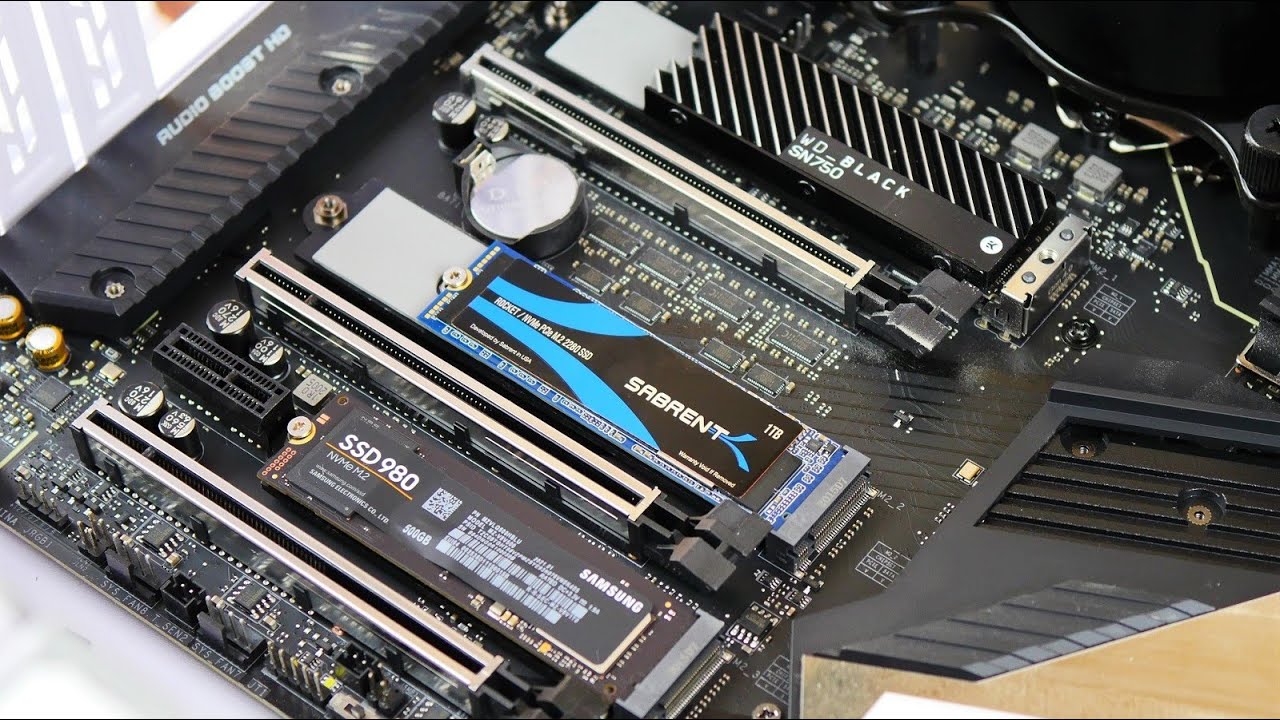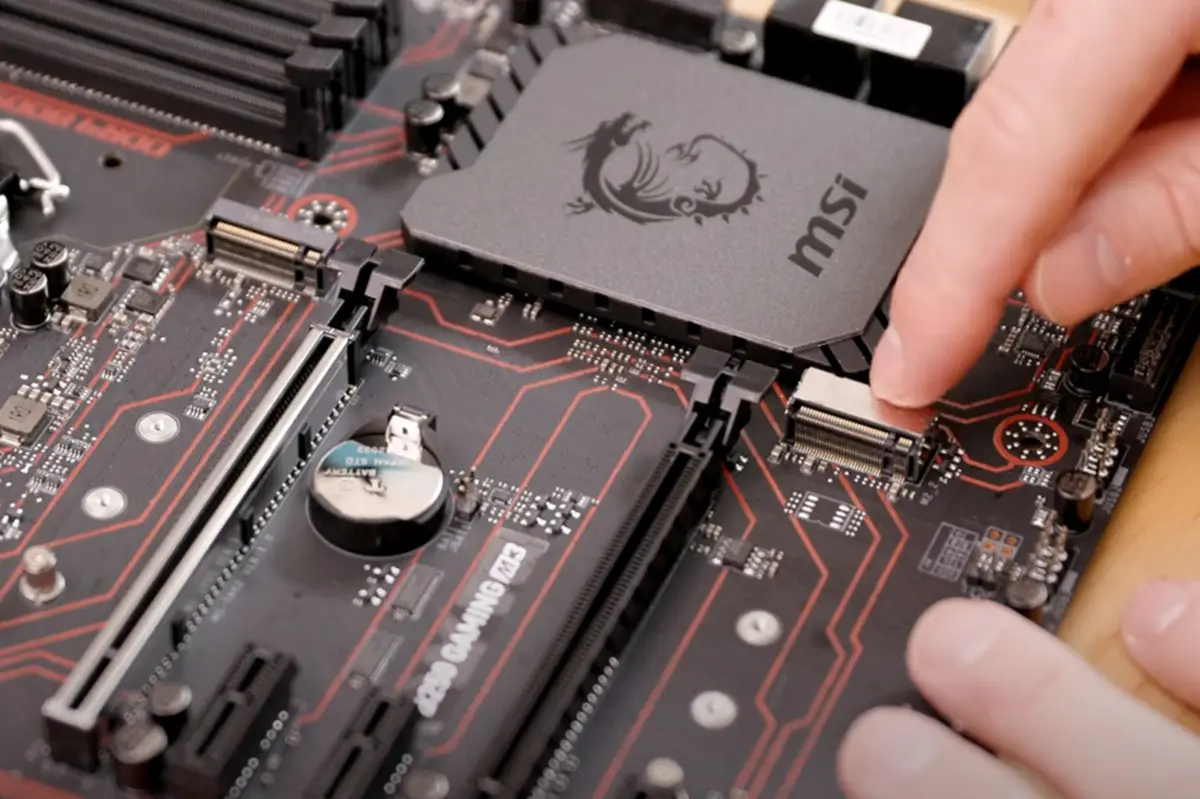Introduction
A RAID (Redundant Array of Independent Disks) array is a technology used to combine multiple physical hard disk drives into a single logical unit. This configuration offers various benefits such as improved performance, data redundancy, and increased storage capacity. While implementing a RAID array, one common scenario that may arise is when the capacity of one hard disk drive is larger than the others.
In this article, we will explore the implications of using a larger capacity hard disk drive in a RAID array and discuss the factors to consider when faced with such a situation.
Before diving into the details, it is essential to understand the basics of RAID and why it is commonly used in storage systems.
Overview of RAID Arrays
RAID is a storage technology that combines multiple physical disk drives into a single logical unit, providing improved performance, fault tolerance, and increased storage capacity. It achieves this through various RAID levels, each with its unique data distribution and redundancy mechanisms.
What is RAID?
RAID stands for Redundant Array of Independent Disks. It was initially developed as a means to address the limitations of individual hard drives in terms of performance, reliability, and capacity. By combining multiple drives into a RAID array, these limitations can be overcome, resulting in enhanced data accessibility and protection.
Why is RAID used?
RAID arrays are primarily used in environments that demand high data availability, such as servers, enterprise storage systems, and data centers. The key benefits of RAID include:
- Improved performance: RAID arrays can distribute data across multiple drives, allowing for parallel read and write operations, significantly enhancing overall system performance.
- Data redundancy: RAID arrays employ redundancy mechanisms to provide fault tolerance. In case of drive failure, data can be reconstructed or retrieved from the remaining drives.
- Increased storage capacity: Depending on the RAID level and configuration, multiple drives can be combined to create a larger logical volume, providing more storage space for applications and data.
With a basic understanding of RAID, we can now delve into the scenario where one hard disk drive has a larger capacity than the others in the RAID array and examine the impact it may have on performance and capacity.
Overview of RAID Arrays
A RAID (Redundant Array of Independent Disks) array is a technology that combines multiple physical hard disk drives into a single logical unit. This configuration offers several advantages in terms of performance, data redundancy, and storage capacity. By understanding the basics of RAID arrays, you can make informed decisions when implementing them.
What is RAID?
RAID, an acronym for Redundant Array of Independent Disks, is a storage technology that combines multiple physical disk drives to create a more reliable and high-performance storage system. While there are various RAID levels, each with its own characteristics, they all share the goal of enhancing disk performance, increasing capacity, and ensuring data reliability.
Why use RAID?
RAID arrays are commonly used in environments that require high data availability, such as servers, enterprise storage systems, and data centers. The key benefits of using RAID include:
- Data Redundancy: RAID arrays use techniques like mirroring and parity to create redundant copies of data. This redundancy ensures that if one drive fails, the data can be recovered using the redundant information, minimizing the risk of data loss.
- Improved Performance: RAID arrays distribute data across multiple drives, allowing for simultaneous read and write operations. This parallelization of data access can significantly enhance the overall system performance, making RAID a preferred choice for demanding applications.
- Increased Storage Capacity: By combining multiple drives into a RAID array, you can create a single logical unit with a larger storage capacity than any individual drive. This consolidated storage space allows for efficient management of large amounts of data.
RAID Levels:
There are several RAID levels, each offering different levels of performance, redundancy, and capacity. The most commonly used RAID levels include:
- RAID 0: Also known as striping, RAID 0 offers improved performance by spreading data across multiple drives. However, it does not provide any data redundancy, meaning that if one drive fails, all data is lost.
- RAID 1: Also known as mirroring, RAID 1 duplicates data across two drives, providing fault tolerance. If one drive fails, the system can continue to operate using the mirrored copy.
- RAID 5: RAID 5 distributes data and parity information across multiple drives. It offers both improved performance and data redundancy, making it a popular choice for many applications.
- RAID 10: Also known as RAID 1+0, RAID 10 combines aspects of both RAID 1 and RAID 0. It provides both performance enhancement and data redundancy by mirroring pairs of drives and then striping the data across those pairs.
Understanding the different RAID levels and their characteristics allows you to choose the most suitable configuration based on your specific requirements for performance, data redundancy, and storage capacity.
What is RAID?
RAID, which stands for Redundant Array of Independent Disks, is a storage technology that combines multiple physical hard disk drives (HDDs) into a single logical unit. The purpose of RAID is to provide enhanced performance, fault tolerance, and increased storage capacity compared to individual HDDs.
How does RAID work?
RAID works by distributing data across multiple HDDs, creating a virtual drive that appears as a single device to the operating system and applications. This distribution can occur in various ways, known as RAID levels, each offering different benefits and trade-offs.
There are several commonly used RAID levels, including:
- RAID 0: Also known as striping, RAID 0 offers improved performance by splitting data across multiple drives. It does not provide redundancy, meaning that if one drive fails, data loss occurs.
- RAID 1: Also known as mirroring, RAID 1 duplicates data across two drives. This provides data redundancy, ensuring that if one drive fails, data can be retrieved from the mirror.
- RAID 5: RAID 5 distributes data and parity information across multiple drives, providing a balance between performance and redundancy. It can withstand the failure of one drive without losing data.
- RAID 10: RAID 10 combines aspects of RAID 1 and RAID 0. It mirrors pairs of drives for redundancy and then stripes data across those pairs for improved performance.
Why use RAID?
RAID is widely used in environments that require high data availability, such as servers, enterprise storage systems, and network-attached storage (NAS) devices. Some key reasons for using RAID include:
- Performance improvement: By distributing data across multiple drives, RAID arrays can achieve higher data transfer rates and improved input/output (I/O) performance compared to individual drives.
- Data redundancy and fault tolerance: RAID configurations provide redundancy mechanisms that allow for the recovery of data in the event of a drive failure. This ensures that data remains accessible even if one drive becomes unavailable.
- Increased storage capacity: Combining multiple drives in a RAID array can result in a larger logical volume size, offering additional storage space for applications and data.
Overall, RAID technology offers a robust solution for data storage, combining the benefits of improved performance, fault tolerance, and increased capacity. The choice of RAID level depends on the specific requirements of the system, striking a balance between performance, redundancy, and cost-effectiveness.
Why is RAID used?
RAID (Redundant Array of Independent Disks) is used in various storage systems and environments that require high data availability and reliability. RAID technology provides several benefits that make it a popular choice for businesses and organizations. Let’s explore why RAID is used and the advantages it offers.
Data Redundancy and Fault Tolerance:
One of the primary reasons for using RAID is to ensure data redundancy and fault tolerance. RAID configurations employ techniques such as mirroring, striping with parity, or a combination of both to create redundant copies of data. In the event of a drive failure, the redundant data allows for the retrieval or reconstruction of the lost data. This redundancy minimizes the risk of data loss, providing businesses with peace of mind and increased data reliability.
Improved Performance:
RAID arrays can significantly enhance system performance by distributing data across multiple drives. By enabling simultaneous read and write operations, RAID improves input/output (I/O) performance, reducing the time required to access and retrieve data. This is particularly beneficial in environments that demand high data throughput, such as databases, file servers, and multimedia applications.
Scalability and Flexibility:
RAID technology allows for easy scalability by adding or replacing drives within an array. As storage needs grow, additional drives can be incorporated into the RAID configuration to increase storage capacity without disrupting existing data. Moreover, RAID systems are flexible and compatible with various drive types and sizes, enabling organizations to adapt to changing storage requirements.
Data Security:
RAID provides an added layer of data security through its redundant data storage. In the event of a drive failure, the redundant copies of data ensure that critical information remains accessible, minimizing the risk of data breaches or interruptions to business operations. This is especially crucial for organizations that handle sensitive data or operate in industries with strict data protection regulations.
Cost-Efficiency:
While RAID implementations may require an initial investment in multiple hard drives, they can result in long-term cost savings. RAID arrays offer increased storage capacity, which allows businesses to store more data without the need for additional hardware or infrastructure. Additionally, the improved performance of RAID arrays can lead to increased productivity and efficiency, translating into cost savings in terms of time and resources.
In summary, RAID is used to provide data redundancy, enhance performance, offer scalability, improve data security, and achieve cost-efficiency. Whether it is for enterprise storage systems, servers, or individual workstations, RAID technology offers numerous benefits that contribute to a more stable, reliable, and robust storage infrastructure.
Types of RAID Arrays
RAID (Redundant Array of Independent Disks) technology offers different levels or configurations known as RAID levels. Each RAID level has its own characteristics in terms of performance, data redundancy, and capacity. Understanding the different types of RAID arrays is essential for choosing the most suitable configuration for your specific storage needs.
RAID 0: RAID 0, also known as striping, distributes data across multiple drives without any redundancy. It offers improved performance by enabling concurrent read and write operations across the drives. However, RAID 0 does not provide data redundancy, meaning that if one drive fails, the entire array may become inaccessible, resulting in data loss. RAID 0 is primarily used in situations where performance is a priority, and data redundancy is not a significant concern.
RAID 1: RAID 1, also referred to as mirroring, duplicates data across two or more drives. Each drive in the array contains an exact copy of the data, providing data redundancy and fault tolerance. If one drive fails, the mirrored drive(s) can continue to serve data, ensuring minimal disruption. RAID 1 offers high data redundancy but does not provide enhanced performance or increased storage capacity. It is commonly used in scenarios where data integrity and availability are critical.
RAID 5: RAID 5 distributes data and parity information across multiple drives. Parity information allows the recovery of data in case of a drive failure. RAID 5 combines improved performance with data redundancy, making it a popular choice for many applications. It offers a good balance between performance and fault tolerance. However, the capacity of a RAID 5 array is reduced by the equivalent of one drive for storing parity information.
RAID 10: RAID 10 combines the features of RAID 1 (mirroring) and RAID 0 (striping). It mirrors pairs of drives, providing data redundancy, and then stripes data across those mirrored pairs for improved performance. RAID 10 offers both high performance and enhanced data protection, making it suitable for environments that require both speed and fault tolerance. However, RAID 10 requires a higher number of drives compared to other RAID levels, making it more expensive.
RAID 6: RAID 6 is similar to RAID 5 but with added redundancy. It uses dual parity, which means it can withstand the failure of two drives without losing data. RAID 6 is designed to provide a higher level of fault tolerance and data protection, especially in large-scale storage systems. However, the additional parity calculation overhead may result in slightly lower performance and reduced usable capacity.
These are the most commonly used RAID levels, each offering specific features suited to different requirements. It is essential to assess your needs in terms of performance, data redundancy, and capacity before choosing the appropriate RAID level for your storage solution.
Understanding Capacity in RAID Arrays
Capacity is a crucial aspect to consider when working with RAID (Redundant Array of Independent Disks) arrays. RAID configurations can impact the effective storage capacity of the array, and it is important to understand how different RAID levels and disk configurations influence the overall capacity.
Raw Capacity versus Usable Capacity:
When discussing capacity in RAID arrays, it is essential to differentiate between raw capacity and usable capacity. The raw capacity refers to the total size of all the physical drives in the RAID array. However, due to various factors such as data redundancy, parity information, and formatting overhead, the usable capacity, or the amount of storage space available for data, will be less than the raw capacity.
RAID Levels and Capacity:
Each RAID level has its own impact on capacity, as they employ different mechanisms for data distribution and redundancy:
- RAID 0: RAID 0 does not provide any data redundancy, and all the drives in the array are utilized for data storage. As a result, the usable capacity of RAID 0 is equal to the sum of the capacities of all the drives in the array.
- RAID 1: RAID 1 utilizes mirroring, creating an exact copy of data on each drive. While this provides redundancy, it results in usable capacity being limited to the capacity of a single drive in the array.
- RAID 5: RAID 5 distributes data and parity information across multiple drives. The parity information allows for data recovery in case of drive failure. However, the capacity of a RAID 5 array is reduced by approximately the size of one drive to account for parity storage.
- RAID 10: RAID 10 combines mirroring and striping. Usable capacity in RAID 10 is similar to RAID 1, as it involves mirroring pairs of drives. The overall capacity will be equal to half of the total raw capacity of the array.
Factors Affecting Capacity:
Several factors can affect the usable capacity in RAID arrays:
- Drive Size Discrepancies: In RAID arrays where drives of different sizes are used, the capacity will be limited to the size of the smallest drive. For example, if a RAID 5 array has three drives of different sizes, the usable capacity will be equal to the capacity of the smallest drive multiplied by two.
- Parity Overhead: RAID configurations that employ parity, such as RAID 5 and RAID 6, require additional storage space to store parity information. This reduces the overall usable capacity.
- Formatting Overhead: File system formatting and RAID metadata also consume some storage space, which further decreases the usable capacity of the array.
Understanding the impact of RAID levels, drive configurations, and other factors on capacity is crucial when planning storage requirements and managing available space in RAID arrays. It is essential to consider these factors to ensure that the storage solution meets the intended capacity needs of the system.
What Happens When One Hard Disk Drive is Larger Than the Others?
When implementing a RAID (Redundant Array of Independent Disks) array, one common scenario that can arise is when the capacity of one hard disk drive (HDD) is larger than the others in the array. This size discrepancy can have various implications and considerations that need to be taken into account.
Impact on Usable Capacity:
When one HDD has a larger capacity than the others, the usable capacity of the RAID array will be limited by the size of the smallest drive. The RAID controller treats all drives in the array as if they were the same size. This means that the extra capacity of the larger drive will not be fully utilized, resulting in a waste of storage resources.
Performance Considerations:
Having one HDD with a larger capacity than the others can potentially impact the performance of the RAID array. Since RAID arrays typically distribute data evenly across all drives, the larger drive may be underutilized in terms of storage capacity. This can result in uneven data distribution and potentially affect the overall performance of the array. It’s important to carefully consider the performance implications before incorporating a larger drive into the RAID array.
Compatibility and RAID Level Limitations:
The compatibility and support for mixing different drive sizes within a RAID array can vary depending on the RAID controller and the specific RAID level being used. Some RAID controllers may not support mixing different drive sizes at all, requiring all drives to have the same capacity. It’s crucial to consult the RAID controller documentation or manufacturer’s guidelines to ensure compatibility and determine any limitations or requirements for mixing drive sizes within the chosen RAID level.
Future Expansion:
Using a larger HDD in a RAID array can limit future expansion options. If the array needs to be expanded or replaced in the future, all drives would need to be of the same capacity to maintain compatibility and performance. This means that the larger drive would need to be replaced or upgraded to match the capacity of the other drives, presenting additional costs and potential downtime during the upgrade process.
Data Distribution and Redundancy:
RAID arrays distribute data and redundancy information across all drives in the array. When one drive has a larger capacity, the RAID controller will allocate an equal amount of usable space on each drive, which may not fully utilize the larger drive’s capacity. Additionally, the larger drive will contribute less to the overall redundancy mechanism, potentially impacting the fault tolerance and data protection capabilities of the RAID array.
In summary, incorporating a HDD with a larger capacity than the others in a RAID array can result in limitations in usable capacity, potential performance implications, compatibility concerns, and future expansion limitations. It is important to carefully assess the RAID controller’s capabilities, consider the potential impact on performance and data distribution, and ensure compatibility before implementing such a configuration.
Impact on Performance and Capacity
When implementing a RAID (Redundant Array of Independent Disks) array and incorporating a hard disk drive (HDD) with larger capacity than the others, it is important to consider the potential impact on both performance and capacity. The size discrepancy between drives can have implications for these two key aspects of the RAID array.
Performance:
The performance of a RAID array can be affected when one HDD has a larger capacity than the others. RAID arrays typically distribute data evenly across all drives in the array to achieve improved performance. However, when one drive has a larger capacity, it may end up being underutilized. The RAID controller treats all drives as if they were the same size, resulting in uneven data distribution. As a result, the performance may be limited by the slower or smaller drives in the array, despite the presence of a larger drive. This can potentially result in suboptimal performance in terms of read and write speeds.
Furthermore, if the RAID array is using a parity-based RAID level such as RAID 5 or RAID 6, the larger drive’s additional capacity may provide less contribution to the parity data. This can result in increased parity calculation times and potentially slower write performance.
Capacity:
The capacity of a RAID array is affected by the inclusion of a larger HDD. The usable capacity of the RAID array will be limited by the size of the smallest drive in the array. The RAID controller treats all drives as if they were the same size, so the extra capacity of the larger drive is not fully utilized. This can result in wasted storage resources, as the remaining capacity of the larger drive goes unused.
For example, in a RAID 5 array with four drives of equal capacity except for one larger drive, the usable capacity of the RAID array will be capped at the capacity of the smallest drive multiplied by three. The excess capacity of the larger drive will not contribute to the overall capacity of the array.
It is important to carefully plan and consider the capacity requirements when incorporating a larger drive into a RAID array. Additionally, if expansion or replacement of the RAID array is anticipated in the future, all drives would need to match in size or be upgraded to maintain compatibility, which could incur additional costs and potential downtime during the upgrade process.
In summary, the incorporation of a larger capacity HDD in a RAID array can have implications for both performance and capacity. It can result in underutilization of the larger drive, potentially impacting the overall performance of the array. Additionally, the usable capacity will be limited by the size of the smallest drive, leading to wasted storage resources. Careful planning and consideration are necessary to assess the performance and capacity requirements and ensure optimal utilization of the drives in the RAID array.
Factors to Consider When Using a Larger Disk in RAID
When incorporating a larger capacity hard disk drive (HDD) into a RAID (Redundant Array of Independent Disks) configuration, several factors need to be taken into consideration to ensure optimal performance, compatibility, and data integrity. Here are some key factors to consider when using a larger disk in RAID:
RAID Controller Compatibility:
It is important to ensure that the RAID controller or RAID software being used supports mixing different drive sizes within the RAID array. Some RAID controllers have limitations on mixing drive sizes, and not all controllers can handle the addition of a larger drive. Consult the RAID controller documentation or manufacturer’s guidelines to ensure compatibility.
RAID Level:
Consider the RAID level being used and how it handles drive size discrepancies. Some RAID levels, like RAID 0 and RAID 1, typically do not have issues with mixing drive sizes. However, other RAID levels, such as RAID 5 or RAID 6, may require all drives to be of the same capacity to function optimally. Understand the limitations and considerations specific to the RAID level being implemented.
Usable Capacity:
Keep in mind that the usable capacity in a RAID array will be limited by the smallest drive in the array. The larger capacity of the new drive will not be fully utilized, resulting in unutilized storage space. Consider the impact on available capacity and whether additional drives may be needed in the future to expand the array or match the capacity of the larger drive.
Performance Considerations:
When incorporating a larger drive, consider the potential impact on performance. In RAID configurations that distribute data evenly across all drives, the larger drive may be underutilized, leading to a potential performance bottleneck. Assess the performance requirements of your system and determine if the larger drive will improve performance or if other optimizations need to be made.
Data Redundancy and Fault Tolerance:
Ensure that the larger drive’s additional capacity does not compromise data redundancy and fault tolerance in the RAID array. If using a parity-based RAID level, such as RAID 5 or RAID 6, the larger drive may contribute less to the parity data, potentially affecting fault tolerance and data protection capabilities. Assess the impact on redundancy mechanisms and ensure that the array can still withstand drive failures without significant risk to data integrity.
Future Expansion and Upgrades:
Consider the potential impact on future expansion or upgrades of the RAID array. If additional drives are needed in the future to expand the array or match the capacity of the larger drive, the size discrepancy may pose limitations. Assess the scalability and flexibility of the RAID array and evaluate if it can support future storage requirements without significant constraints or unexpected costs.
Compatibility with Existing Drives:
Lastly, consider the compatibility with existing drives in the array. If the larger drive is of a different manufacturer or model, ensure that it is compatible and optimized for use in the RAID array. Mixing different drives can introduce compatibility issues and potential performance disparities.
By considering these factors, you can make informed decisions when incorporating a larger disk into a RAID array, ensuring compatibility, performance optimization, data integrity, and future scalability.
Steps for Implementing a RAID Array with One Larger Disk
Implementing a RAID (Redundant Array of Independent Disks) array with one larger disk requires careful planning and consideration to ensure compatibility and optimal performance. Here are the steps to follow when incorporating a larger disk into a RAID array:
Step 1: Determine RAID Level:
Decide on the RAID level that best suits your requirements in terms of performance, data redundancy, and capacity. Each RAID level has its own characteristics, so choose the one that aligns with your specific needs.
Step 2: Verify RAID Controller Compatibility:
Check the compatibility of your RAID controller or software with mixing different drive sizes. Ensure that the controller supports the addition of a larger disk within the RAID array. Consult the manufacturer’s guidelines or documentation for compatibility information.
Step 3: Assess Existing Array Configuration:
If you already have an existing RAID array, evaluate the current configuration and capacity. Determine if the larger disk will be added as a new drive or if it will replace an existing drive. Consider any potential impact on data synchronization or RAID rebuilding that may be required.
Step 4: Backup Data:
Before proceeding with any changes to the RAID array, it is essential to back up all data on the existing array. This step ensures that data is protected in case of any unforeseen issues during the implementation process.
Step 5: Install the Larger Disk:
Physically install the larger disk into the RAID array while the system is powered off. Ensure proper connection and compatibility with the RAID controller.
Step 6: Configure RAID Controller:
Access the RAID controller settings through the appropriate utility or BIOS interface. Configure the RAID controller to include the new drive in the array. Depending on the controller, this may involve selecting the appropriate RAID level and specifying the drive setup (for example, whether the larger drive replaces an existing one or is added as an additional drive).
Step 7: Initialize and Verify RAID Configuration:
Once the configuration is set, initialize the RAID array to create the logical volume. This process may involve initializing the parity or synchronization of data across the drives. After the initialization is complete, verify the RAID configuration to ensure that all drives are properly recognized and functioning as expected.
Step 8: Restore Data:
If the RAID array is replacing an existing one, restore the data from the backup onto the new array. Ensure that the data from the backup is transferred to the appropriate logical volume and verify its integrity.
Step 9: Test and Monitor:
Perform thorough testing of the new RAID array to ensure its functionality and performance. Monitor its operation and check for any potential issues or errors. Regularly monitor the array’s performance and health to ensure optimal performance and data integrity.
Step 10: Plan for Future Expansion or Replacement:
Consider any future expansion or upgrade requirements for the RAID array. If additional drives will be needed, ensure that they match the capacity of the largest drive to maintain compatibility and optimal performance.
By following these steps, you can successfully implement a RAID array with one larger disk while ensuring compatibility, data integrity, and optimal performance for your storage solution.
Conclusion
Implementing a RAID (Redundant Array of Independent Disks) array with one larger disk requires careful consideration and planning to maximize performance, capacity, and data integrity. By following the steps outlined in this article, you can successfully incorporate a larger disk into your RAID configuration while ensuring compatibility and optimal utilization of resources.
Understanding the impact of a larger disk on performance and capacity is crucial in making informed decisions. The size discrepancy can affect data distribution, performance optimization, and future expansion capabilities. It is essential to assess RAID controller compatibility, consider the specific RAID level requirements, and evaluate the potential impact on performance and capacity before adding the larger disk.
Additionally, considering factors such as data redundancy, fault tolerance, and future scalability is imperative when incorporating a larger disk. By ensuring that the larger disk does not compromise these essential aspects, you can maintain the integrity and availability of your data in the RAID array.
Regularly monitoring the RAID array’s performance and health is essential to ensure optimal performance and to detect any issues promptly. This includes testing, verifying the configuration, and implementing a backup strategy to protect your data in case of unforeseen circumstances.
Remember that each RAID setup is unique, and the specific steps and considerations may vary depending on your system and requirements. Consulting the documentation and guidelines provided by the RAID controller manufacturer is essential to ensure a successful implementation.
In conclusion, successfully implementing a RAID array with one larger disk requires careful planning, compatibility assessment, performance evaluation, and thorough monitoring. By considering these key factors, you can effectively utilize the larger disk to enhance performance, increase capacity, and maintain the fault tolerance and data integrity of your RAID array.







